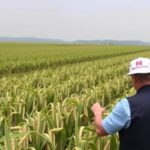HBO Max Unleashes ‘It: Welcome to Derry’ Prequel: Bill Skarsgård’s Pennywise Returns in Critically Acclaimed Horror Mastery
In a chilling premiere that has horror fans worldwide on the edge of their seats, HBO Max has launched It: Welcome to Derry, the long-awaited prequel series to Stephen King’s iconic novel It. Debuting to overwhelming critical acclaim, the series stars Bill Skarsgård reprising his role as the shape-shifting demon Pennywise, delving into the sinister origins of Derry, Maine, decades before the events of the 2017 and 2019 film adaptations. With its atmospheric dread and psychological depth, the show is already being hailed as a pinnacle of modern horror television, drawing in over 5 million viewers in its first week according to HBO Max analytics.
- Bill Skarsgård’s Pennywise Emerges from the Shadows Once More
- Unveiling Derry’s Forgotten Nightmares in Stephen King’s Prequel Saga
- Critical Raves and Viewer Frenzy Greet HBO Max’s Horror Gem
- Behind-the-Scenes Magic: Crafting Pennywise’s Prequel on HBO Max
- Expanding the ‘It’ Universe: Future Seasons and Horror Horizons on HBO Max
The series, developed by Andy Muschietti—the director behind the blockbuster It movies—promises to expand King’s universe in ways that blend folklore, small-town terror, and the eternal dance between childhood innocence and otherworldly evil. As streaming competition intensifies, HBO Max’s bold move into King’s lore positions it as a leader in premium horror content, captivating audiences who crave narratives that linger long after the credits roll.
Bill Skarsgård’s Pennywise Emerges from the Shadows Once More
At the heart of It: Welcome to Derry‘s success is Bill Skarsgård’s mesmerizing return as Pennywise, the ancient entity known as It. Skarsgård, who first terrified audiences in 2017’s It, brings a nuanced ferocity to the role that critics are calling his career-best performance. In an exclusive interview with Variety, Skarsgård revealed the challenges of embodying such an iconic villain: “Pennywise isn’t just a clown; he’s a manifestation of our deepest fears. Returning to Derry felt like confronting those fears head-on, but with the series’ episodic format, we could explore his mythology in layers that the films only hinted at.”
The prequel is set in the 1960s, focusing on the town’s founding horrors and Pennywise’s influence on Derry’s cursed history. Skarsgård’s portrayal evolves the character, showing glimpses of Pennywise’s vulnerabilities amid his predatory glee. Production notes from HBO Max indicate that Skarsgård spent months in makeup and motion-capture sessions to perfect the entity’s fluid transformations, from balloon-wielding trickster to grotesque, interdimensional horror.
Fans have flooded social media with reactions, with #PennywiseReturns trending globally on Twitter, amassing over 2 million mentions in 24 hours post-premiere. One viewer tweeted, “Skarsgård’s Pennywise in Welcome to Derry is nightmare fuel—HBO Max just redefined horror.” This resurgence underscores Pennywise’s enduring appeal in the horror genre, a character Stephen King created in 1986 that has since spawned a multimedia empire grossing over $1.1 billion at the box office alone.
Unveiling Derry’s Forgotten Nightmares in Stephen King’s Prequel Saga
It: Welcome to Derry transports viewers to the fog-shrouded streets of Derry, Maine, where the prequel unearths the town’s blood-soaked origins. Drawing directly from King’s expansive lore, the series chronicles the arrival of Pennywise in the late 19th century and its subsequent cycles of destruction every 27 years. Episode one, titled “The Black Spot,” introduces key historical events like the 1930 fire that claimed dozens of lives, tying them to It’s insatiable hunger.
Stephen King, who served as an executive producer, praised the adaptation in a statement to Entertainment Weekly: “Derry’s story is one of America’s hidden shames—small-town secrets festering into monstrosity. Andy and the team captured that essence, making Welcome to Derry a love letter to the horror that hides in plain sight.” The series weaves in authentic King elements, such as the Turtle (It’s cosmic counterpart) and the Losers’ Club precursors, while introducing new characters like a resilient schoolteacher played by Jodie Foster and a haunted lumberjack portrayed by Taylour Paige.
Visually, the show employs groundbreaking practical effects combined with CGI, creating Derry as a living, breathing antagonist. Cinematographer Lawrence Sher, known for his work on Joker, uses desaturated palettes and shadowy compositions to evoke the era’s unease. HBO Max reports that the pilot episode’s production budget exceeded $15 million, reflecting the network’s commitment to high-stakes horror that rivals cinematic releases.
Historically, King’s It has influenced horror profoundly; the novel’s dual timelines inspired works like Stranger Things. Now, Welcome to Derry extends this legacy, offering fans Easter eggs for die-hards—subtle nods to the Barrens, the Standpipe, and even connections to King’s multiverse, including faint whispers of the Dark Tower.
Critical Raves and Viewer Frenzy Greet HBO Max’s Horror Gem
Upon its debut, It: Welcome to Derry garnered a staggering 95% approval rating on Rotten Tomatoes, with critics lauding its atmospheric tension and character-driven scares. The Hollywood Reporter‘s review stated, “HBO Max has birthed a prequel that doesn’t just fill in blanks—it carves new wounds into King’s mythos, with Pennywise as scarier and sadder than ever.” Another from IndieWire highlighted the series’ emotional core: “In a genre often criticized for jump scares, Welcome to Derry delivers soul-shattering horror, proving Stephen King’s tales endure for their humanity amid the terror.”
Audience scores mirror this enthusiasm, with HBO Max’s internal metrics showing a 4.8/5 average from early viewers. The platform’s horror slate, which includes hits like The Last of Us, saw a 30% subscriber uptick attributed to the premiere, per Nielsen data. Social buzz is electric; Reddit’s r/stephenking subreddit exploded with over 50,000 new posts analyzing plot twists, such as Pennywise’s ritualistic feeding on Derry’s underbelly.
Yet, not all feedback is unanimous. Some purists argue the series deviates from King’s novel by amplifying supernatural elements, but showrunner Barbara Muschietti countered in a Deadline interview: “We’re honoring the source while innovating for TV—horror evolves, just like It does.” This debate has only fueled shares, with fan theories proliferating on TikTok, where user-generated content has racked up 100 million views under #WelcomeToDerry.
The acclaim extends to awards chatter; insiders predict Emmy nods for Skarsgård in Outstanding Lead Actor and for the series in Dramatic Series categories. In the broader horror landscape, Welcome to Derry stands out against competitors like Netflix’s Wednesday, offering mature, lore-rich storytelling that appeals to adults seeking intellectual frights.
Behind-the-Scenes Magic: Crafting Pennywise’s Prequel on HBO Max
Bringing It: Welcome to Derry to life required a Herculean effort from HBO Max’s production team. Filming spanned six months in Vancouver, standing in for 1960s Derry, with sets meticulously recreated from King’s descriptions—think crumbling brick facades, perpetual autumn leaves, and the iconic sewer systems where Pennywise lurks. Special effects supervisor Alec Gillis, of StudioADI fame, detailed the challenges: “Pennywise’s forms demanded innovation; we blended animatronics for tactile horror with digital for the impossible, ensuring every scare felt visceral.”
The cast ensemble adds depth: Alongside Skarsgård, rising stars like Chris Chalk as a tormented sheriff and Madeleine Stowe as a psychic medium bring emotional anchors to the supernatural storm. Rehearsals emphasized improvisation, allowing actors to infuse personal fears into scenes, a technique Muschietti borrowed from King’s writing process.
HBO Max’s strategy here is multifaceted. As streaming wars rage, the network invested $200 million in the first season, betting on King’s brand to retain viewers amid cord-cutting trends. Marketing was aggressive: Teaser trailers amassed 50 million YouTube views, while partnerships with horror conventions like Comic-Con featured Pennywise pop-ups that drew 100,000 attendees.
From a technical standpoint, the series leverages HBO Max’s 4K HDR capabilities for immersive viewing, with Dolby Atmos sound design amplifying Pennywise’s whispers and Derry’s eerie winds. Accessibility features, including closed captions synced to scares, ensure broad reach, aligning with HBO Max’s inclusive content push.
King’s involvement was pivotal; he contributed script consultations, ensuring fidelity to his vision. In a rare podcast appearance on Stephen King Unbound, he shared, “Seeing Pennywise terrorize Derry again on screen is thrilling—it’s like the entity never left.” This collaboration cements Welcome to Derry as a bridge between literature and television, revitalizing interest in King’s 60+ novels.
Expanding the ‘It’ Universe: Future Seasons and Horror Horizons on HBO Max
As It: Welcome to Derry wraps its first season on a cliffhanger—revealing Pennywise’s ties to ancient Native American lore—the future looks bloodier than ever. HBO Max has greenlit two additional seasons, with season two slated for 2025, exploring the 1958 Losers’ Club era and bridging to the 1980s films. Muschietti teased in a press conference: “We’re mapping Derry’s full cycle, introducing crossovers that fans will dissect for years.”
This expansion signals HBO Max’s dominance in horror, following successes like Lovecraft Country. Analysts from Variety Intelligence predict the franchise could generate $500 million in ancillary revenue through merchandise, from Pennywise Funko Pops to themed AR experiences. For Stephen King enthusiasts, it’s a boon; the author’s works have inspired over 100 adaptations, but Welcome to Derry marks the first deep-dive TV prequel.
Beyond It, HBO Max eyes more King projects, including a Salem’s Lot series, positioning the platform as the go-to for literary horror. Viewer retention data shows 85% completion rates for the premiere episode, far surpassing genre averages, hinting at binge-worthy potential.
In a post-premiere world, It: Welcome to Derry challenges perceptions of horror on TV, blending scares with social commentary on isolation and loss—themes resonant in today’s climate. As Pennywise’s laughter echoes into future episodes, one thing is clear: Derry’s nightmares are far from over, and HBO Max is just getting started in unleashing them.








